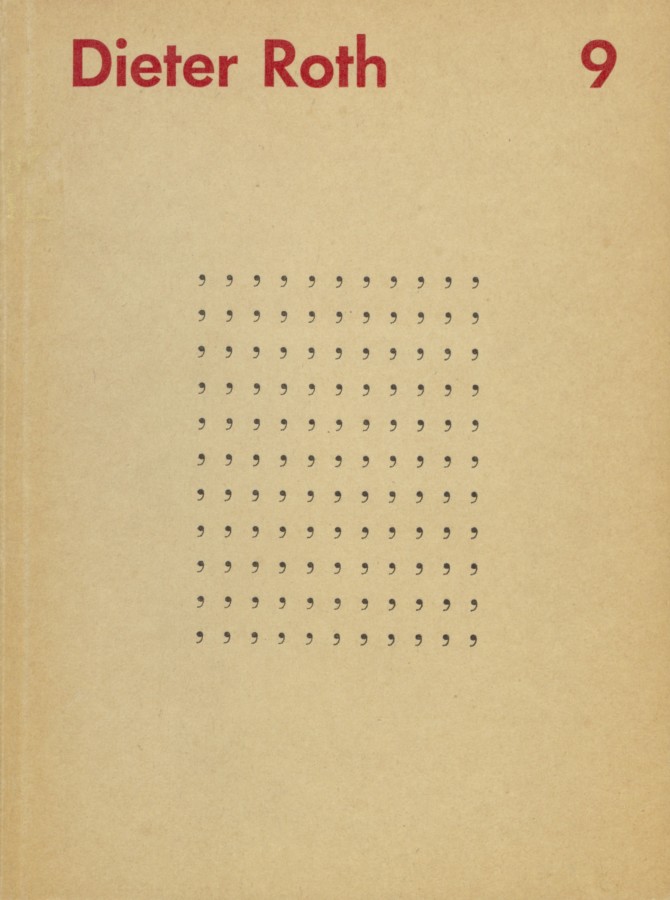Concrete Poetry, Concrete Book: Artists’ Books in German-speaking Space after 1945
@ Special Collections Research Center Exhibition Gallery
1100 East 57th Street, Chicago, IL 60637
Opening Tuesday, January 17th, from 9AM - 4:45PM
On view through Friday, March 17th
Concrete Poetry, Concrete Book: Artists’ Books in German-speaking Space after 1945
Special Collections Research Center Exhibition Gallery
1100 East 57th Street, Chicago, IL 60637
Following the Second World War and with increasing intensity in the 1960s and 1970s, artists working throughout Western Europe explored new media and techniques, engaging in participatory and performative practices that tested the limits of language, representation, and action. Across Austria, Germany, Switzerland, and beyond, friendships formed amongst artists concerned with generating new avenues of access to their artistic aims, often realized in the form of public group events, as well as collaborative publications like art journals, inexpensive multiples, and artists’ books, all of which could be widely circulated and enjoyed independently of fine art institutions.
Drawing on the remarkable collection of rare artists’ books housed in the University of Chicago Library, Concrete Poetry, Concrete Book considers how the artist’s book emerged as a significant preoccupation in this milieu. The exhibition establishes links between artists affiliated with the reduced forms and focused design quality of concrete poetry and artists whose unruly, often messy materials and actions defined performance art. For all of these artists, books afforded sites for experimentation with visual and tactile experience, and the activity of “reading.”
Referring to the way that language takes up space on the page, arrests the eyes, and requires perceptual interaction, works of concrete poetry test the graphical display of language, focusing on the material quality of letters and words. Concrete poetry often required that books take on unusual forms, such as the sequential unbound pages of Gerhard Rühm’s bewegung (1964) and Hansjörg Mayer’s fold-out book typoaktionen (1967), which reinvents the alphabet for tactile encounter. Artists’ books activate the process of reading, inviting the reader to play with and participate in how language and form produce meaning, as in André Thomkins’ “polyglot machine” Dogmat Mot (1965).
At the same time, artists’ books tend to deemphasize reading as a technique for understanding, foregrounding instead tactility, physicality, and materiality, as exemplified in the die-cut multi-colored laminate pages of Dieter Roth’s Bilderbuch (1957/1976). Indeed, Wolf Vostell’s 20-pound Betonbuch (1971), which encases in actual concrete his own book of sardonic proposals “to concretify” cities, furniture, and even clouds, may be read as a definitive if not paradoxical example of an artist’s book: unreadable in any conventional sense, it provokes and at the same time frustrates interaction.
In tandem with the year-long UChicago Arts Program Concrete Happenings devoted to Vostell, this exhibition aims to showcase artists’ books that intersect with and depart from the ambitions of concrete poetry and Fluxus.
Presented by the University of Chicago Library, with additional support generously provided by the Austrian Cultural Forum New York, Swiss Benevolent Society of Chicago, UChicago Arts, and individual donors.
Hours: Mondays through Fridays, 9 a.m. – 4:45 p.m., and, when University of Chicago classes are in session, Tuesdays and Wednesdays, 9 a.m. – 5:45 p.m.
Curator: Caroline Lillian Schopp, PhD candidate in the Department of Art History.
Official Website
More events on this date
Tags: André Thomkins, Chicago, Concrete Poetry Concrete Book, Dieter Roth, Gerhard Rühm, Hansjörg Mayer, Hyde Park, Special Collections Research Center Exhibition Gallery, Wolf Vostell

« previous event
next event »